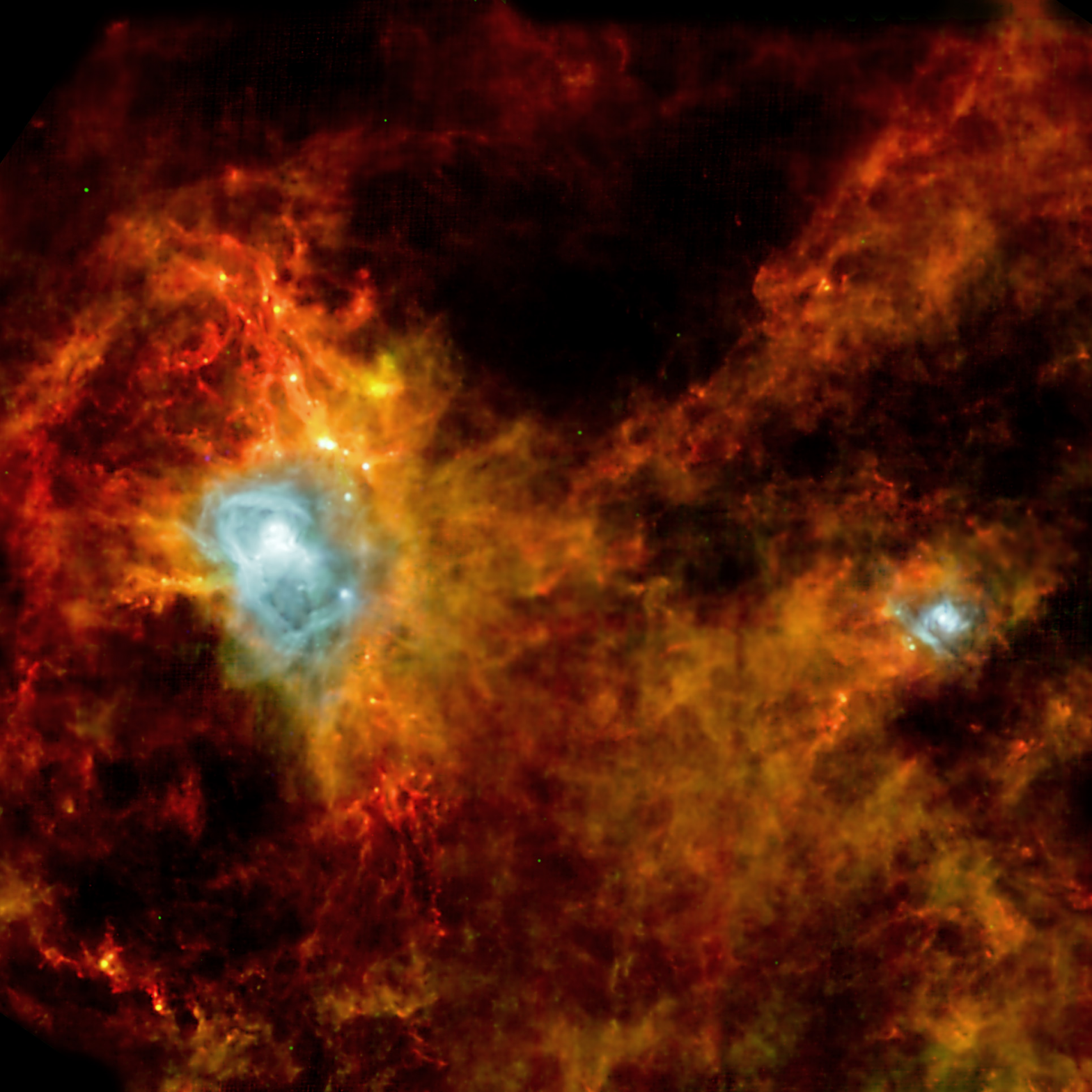Star formation research concerns all the processes that result in the ignition of a new star. When the universe began, there were no stars. For a star to form, material (mostly hydrogen gas) has to contract under gravity until it becomes dense enough for nuclear burning to begin. This has been happening continually throughout the lifetime of the universe. During the life of a star new elements are made inside which, when a star dies, are thrown back into space to help form the next generation. Herschel can shed light on many aspects of star formation, covering the birth, life and death of stars…
What can Herschel do?
Dust is the densest constituent of the interstellar medium (the stuff between all the stars). This means it helps gas clouds collapse under gravity and become dense enough to form a star. It is possible to work out the amount of dust from observations made by Herschel and so predict how quickly a gas cloud could collapse and how many stars will form.
Once a star is born it burns brightly and often heats the nearby dust to relatively high temperatures, but the earlier stages of star formation (when there is only a clump of material rather than a star) involve much cooler objects. The long wavelengths that Herschel observes (far-infrared) are emitted predominantly by very cold regions of space, so it can see the very earliest stages of star formation.
The leftover material after star formation often forms a ‘circumstellar disc’ around the star. It is from a disc like this that the Earth and other planets formed. Herschel will look at discs like this around distant young stars, and see new solar systems forming. This will help us understand how our solar system and the Earth came to be.
All the heavier elements in the universe (anything other than hydrogen or helium) are formed in stars, including those that went on to form the Earth… and you! As each generation of stars passes, the chemical composition of our galaxy will change. Herschel is equipped to look at signatures of different chemicals in space by observing signatures called ‘spectral lines’. It can even see water in space.
Here we have focussed on what can be done in our own galaxy, but star formation is important in galaxies throughout the universe. (See the Galaxies page for more information)

